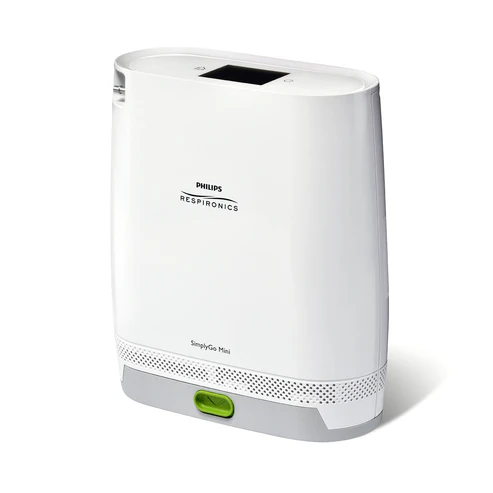
Hearing aids are useful tools in treating hearing loss, but proper care and maintenance are necessary to ensure their effectiveness. Several kinds of accessories make it easier to clean and maintain your hearing aids. Below, we describe some of the most common hearing aid accessories. Before purchasing and using these accessories, check with your audiologist to make sure that they are appropriate for your specific device. Your audiologist may even have extras to give to you and show you how to use the accessory properly to avoid damaging your hearing aids.
We note popular brands trusted by audiologists. Other good brands may exist; however, check first with an audiologist before purchasing any product. You can check to see if the product is sold by Oaktree, an audiology product supplier, or by Diglo, a popular consumer site for hearing-loss-related products.
Battery magnet
People who need to change their hearing aid batteries (not the rechargeable type) sometimes find it a challenge to remove and insert them, as they are quite small. Hearing aid magnets are small sticks with magnets on the end that make it easier to remove the battery. These are usually included with the hearing aids when you purchase them. If you have lost yours, ask your audiologist for one.
Cleaning brush
New hearing aids usually come with a cleaning brush. Use this brush to remove wax from the microphone and sound ports of your hearing aid. Ask your audiologist to show you how to do this.
Sometimes audiologists will recommend using a toothbrush instead if you need a stiffer brush to effectively remove wax from the hearing aid microphone ports. However, be sure to ask your audiologist before using a toothbrush on your device.
If you have lost your brush, ask your audiologist for a replacement. You can also purchase brushes online that have a battery magnet on one end and a wax removal loop on the other end.
Vent cleaner
If you have an in-the-ear hearing aid or a behind-the-ear model with an earmold, the part that goes into your ear will have a vent. This vent allows low-pitch sounds to leak out of your ear, making your own voice sound more natural. Ask your audiologist to show you where the vent is located so that you do not confuse it with the microphone port or sound port of the hearing aids.
An inexpensive vent cleaner, which you can easily find online or obtain from an audiologist, allows you to remove wax from vents so your hearing aids perform as intended. Vent cleaners have a long plastic thread that you simply work through the hole to clean out wax.
Dehumidifier or drier
Moisture will damage the delicate electronic components of hearing aids over time. Putting your aids in a dehumidifier or hearing aid drier each night will remove moisture from them, making them sound better and reducing the need for repairs.
Passive dehumidifiers are typically jars with desiccant beads inside of them. You simply leave the hearing aids in the jar at night. These work well for traveling. One popular brand sold by audiology practices is Hal-Hen, but other products exist.
There are also a number of electronic hearing aid dehumidifiers that circulate warm air to dry aids. Some of the more expensive devices sanitize aids with UV light. Reputable brands often sold by audiologists include PerfectDry Lux and Zephyr.
Carrying case
If you have rechargeable hearing aids, the charger often acts as a protective case for them. If not, a carrying case for your hearing aids usually comes with your purchase. These cases may be soft or hard.
Get in the habit of always putting your hearing aids in their case when you remove them. While in your house, the case protects your hearing aids from pets and small children. It’s also a good idea to always have a case with you when you are outside your home. Do not simply put your aids in your pockets or in a tissue. People tend to forget that they have put their hearing aids in their pockets and then wash their clothes with the hearing aids inside, and tissues tend to get thrown away.
Hard-sided carrying cases offer more protection against damage to the hearing aid than soft cases. If you plan to do activities where you may get wet, you’ll want to put your devices in a waterproof case.
Alcohol-free wipes
You should use a cloth designed for hearing aids to wipe debris off them. Don’t use harsh cleaners, like alcohol, which may damage their special moisture-resistant coating.
One reputable brand of hearing aid wipes popular in audiology offices is AudioWipes. These wipes may be found online at a variety of retailers. They come in canisters as well as individual packets.
Try to avoid using brands that have not been recommended by an audiologist. You don’t want to risk damaging your hearing aids with untested products.
Wax guards
Wax guards are small stoppers typically found on the part of the hearing aid that goes into the ear canal. Many (although not all) hearing aid models will have them. They keep wax from entering the hearing aids and damaging the internal parts. Wax guards look like tiny sink drain strainers; there is a depression with tiny holes that let sound exit the hearing aids while stopping wax from entering the aid.
If your hearing aid uses wax guards, your audiologist will usually give you a pack with your new hearing aid. You may then purchase more from the audiologist. You need to be sure to purchase a wax guard that fits your hearing aid model.
Battery tester
If your hearing aid batteries are the disposable type that you must change (not rechargeable), you should get a battery tester. If your hearing aid stops working, the first step is to make sure wax is not blocking sound from getting out of the hearing aid. The second step is to check that the battery is good with a tester. You simply place the battery inside the tester, and the display will tell you if your battery has died.
One popular design fits on a keychain so that you may carry it with you.
Folding mirror
Although not specifically a hearing aid accessory, a folding mirror can be very helpful to hearing aid wearers. When you first learn to insert your hearing aids, you’ll want to check what you are doing in a mirror. Some people find it helpful to use a trifold mirror that allows them to see the front and sides of their faces. Any mirror that suits your decor will work.
Hearing aid accessories can help you get the most out of your device
Hearing aids can be a useful investment for people with hearing loss. However, it’s important to perform proper care and maintenance on your devices to maximize their benefits and lifespans. The hearing aid accessories above are helpful tools for getting the most out of your devices. Talk with your audiologist about which accessories are right for your device.








